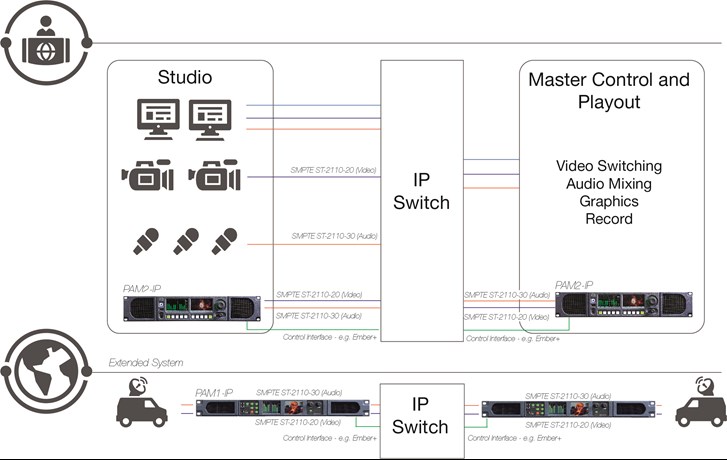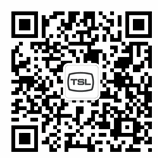EXPLORE THE HUB: Hot Topcis and Deep Dives | Ebooks and Technical Application | Case Studies
AMU Control and the need for Interoperability
The evolution of audio monitoring
Audio monitoring has been a part of broadcast sound operations since the earliest days of television and radio. Today’s audio monitoring units have developed from being a basic meter with integrated loudspeaker to a fully networkable, controllable device with a variety of features and functions. Terms have changed too, with the practical but prosaic monitoring amplifier (MNA) to the modern audio monitoring unit (AMU).
Regardless of the name, the purpose of an AMU is to check that audio signals and the equipment through which they pass are working satisfactorily. To do this it allows the required signal to be isolated on headphones or loudspeakers for identification and subjective assessment. Measuring the audio signal is another critical element of the audio monitoring process. At one time, audio level measurement was carried out using a simple moving coil meter design based on mechanical-electrical technology.
The original audio level meter has evolved into more graphical displays, such as LEDs and touch screen bar metering, with loudness now the primary parameter being measured, although basic audio level measurements still play a part.
Throughout the evolution of the audio monitoring unit, the ability to control it remotely, especially using third-party protocols was rarely a topic of conversation. Traditionally, audio monitoring units have been controlled by operators, often to recall presets. This manual approach is now being challenged with the emergence of IP, presenting a technological ‘curve-ball’.
IP and the promise of remote operation
IP connectivity has brought powerful networking and remote operation options into broadcast installations. To exploit all the possibilities available, having the right control protocol for devices such as AMUs is a necessity. Not having one is rather like buying a television screen without a remote. The TV receives all the transmitted channels but there is only one screen, making the remote control vital in being able to select what is viewed.
The parallel situation in the new breed of broadcast sound installations is the connection between the audio device and the IP network to which it is attached. The IP network is now the core of the broadcast facility and is used to not only transport audio signals but also to the control information itself.
To address the ‘curve-ball’ challenge effectively, the AMU has had to grow up. In the past , it was enough for AMU manufacturers to provide a variety of audio monitors, offering a number of input types and to support ‘point to point’ connections only.
IP has turned that upside down. Previously, in SDI infrastructures, the control system connected to the SDI the router and did not need to know what devices the SDI router was connected to. By replacing the SDI router with an IP switch, the control system can now control the devices connected it to it directly and this includes the AMU. This is the approach TSL Products has taken with the next generation version of its flagship AMU, the PAM-IP.
Moving the connection point
The PAM-IP can connect to both SDI infrastructures and IP networks and can be controlled ‘In-Band’ using the same network infrastructure as that being used to transport ST-2022-6 and ST-2110 audio and video content or ‘Out of Band’ using a separate IP network if required. Either way. there is now communication between AMU and the control system that can be used to allow source selection.
A different paradigm has been created because of this. Before, an AMU with 4 SDI inputs, in a point to point infrastructure may have been considered more than enough. If not, then crosspoints on upstream SDI routers would have been used to allow for more that 4 sources to be monitored.
In the IP domain the crucial point is no longer about the number of inputs an AMU has but more about the control protocols it supports to allow it to communicate with the control system. Because of this, the notion of using presets on an AMU to switch input sources is now being replaced by a control system that can allow any source within an IP network to be monitored by the AMU.
It is common for modern broadcast control systems to not only provide a solution from which all broadcast devices can be controlled, but also to provide a level of intelligence that can be used to assist operators, akin to an ‘auto pilot’ system. This level of intelligence can be used to prevent operators from making invalid routes or selections whilst also making decisions on behalf of the operator, leaving them to focus on what they need to achieve rather than how it gets done.
Other issues that influence modern AMU designs are the standards or proprietary formats it must conform to. Increasingly, IP networks are being used to transport standards such as SMPTE ST-2002-6 and/or ST 2110, whilst proprietary AoIP formats such as Dante or Ravenna are now commonplace.
Interoperability for connections and control
Audio over IP (AoIP) opened up new possibilities for connectivity and networking but because the majority of systems are proprietary, including Dante and Ravenna, users would be limited to using only those audio devices that were compatible.
The AES67 standard has solved the problem to an extent, finally allowing audio to be transported between what would otherwise be non-compatible audio devices. However, effective discovery and control of audio devices from different manufacturers of AES67 products must also exist if customers are to enjoy the pain free ‘plug and play’ experience typical of proprietary AoIP formats.
The importance of standardisation therefore extends to another interoperability layer, the control and discovery function. With a number of control protocols currently being used across broadcast installations. When selecting audio monitoring products to monitor content transported using IP, the control protocols it can support be them ‘In-Band’ or ‘Out of Band’ are important if a situation similar to the incompatibility between IP transport standards and proprietary formats is to be avoided.
Which is why TSL Products provides three control protocol options on the PAM-IP. The first of these is NMOS (Networked Media Open Specifications), ratified under the auspices of the Advanced Media Workflow Association (AMWA), of which TSL Products is a member. Use of NMOS IS-04 and IS-05 is increasing and these along with IS-07 and IS-08 will see more and more customers look to control their audio monitoring units using NMOS.

The second of these, Ember+, which, although developed by the Lawo Group, is also an open standard. The decision to have both NMOS IS-04/5 and Ember+ on the PAM-IP was a strategic one because they are both implemented in two popular broadcast control systems, VSM and Cerebrum. This caters for existing users of those two broadcast control systems.
The third of these is the PAM-IP’s very own API (application programming interface) that enables systems integrators or broadcasters to control the PAM-IP within an IP network, regardless of which broadcast control system they choose.
So, as with any device being connected to an IP network to monitor or produce content, the modern day AMU must also evolve to cater for not only the content itself, transported using standards based or proprietary technologies, but also to provide support for a number of control protocols, which in days gone by it could afford to ignore.


